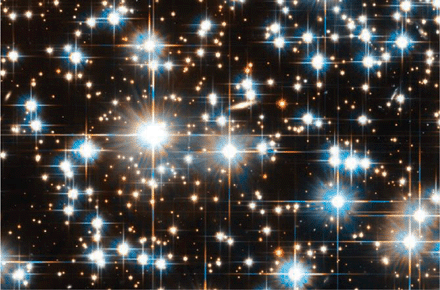|
It's the Astronomy Online non-Blog, or un-Blog.
Everyone has a blog now and since I am no follower of trends, I decided to merge the blog with the website. And I don't want to neglect the website in favor of posting on the blog.
These are the pages that were on the blog of old:
- Home
- Archive (Index of Pages)
- Me
- Current Trends
- Links
- Soho Live
Links:
Google Maps - Mars
Google Maps - Moon
HiRISE
HiRISE - MRO Imaging
Mac Singularity
Meade4M
Slackerpedia Galactica
Software for the Mac
Starry Night Online
Venus Maps
More Favorites:


































Thank you for visiting!
|
|
 |
|
Aging White Dwarfs, Smallest Stars Found in Cluster:
A team of astronomers led by Harvey Richer from the University of British Columbia in Vancouver used a 5 day exposure from the Hubble Space Telescope of globular cluster NGC 6397 to detect the stars that fit the theoretical lower limit of stellar formation as well as aging white dwarfs.
The long exposure of this cluster revealed some of the faintest stars ever - stars that are barely visible. These objects are just above the Brown Dwarf limit of 0.083 times the mass of our Sun. This is the smallest a star can be. What separates a star from a brown dwarf is hydrogen fusion - a star burns hydrogen. A brown dwarf also produces heat, but only by helmholtz contraction - heat by compression due to gravity.

About the image: 5-day Hubble Space Telescope image of NGC 6397, the bright blue objects are aging white dwarfs while the dimmer, brown objects are stars at or near 0.083 solar masses. There is a galaxy visible near the center of the image - this is not a part of the cluster.
In addition to the discovery of the smallest stars, white dwarfs were found. While it is not unusual to find white dwarfs, these are shining with blue light. This fits another theoretical model of white dwarfs - they cool with age.
When a white dwarf cools below 4000 Kelvin, its atmosphere forms hydrogen molecules that absorbs the red wavelengths. This gives the white dwarfs in the above image their blue color.
NGC 6397 is one of the oldest globular clusters in our galaxy. Globular clusters exist in the halos of galaxies and give valuable insight to the age as well as formation and evolution of our galaxy.
IMAGE CREDIT : NASA/ESA/H. RICHER, UNIVERSITY OF BRITISH COLUMBIA
Next Post | Previous Post | Back to Top
|
|

